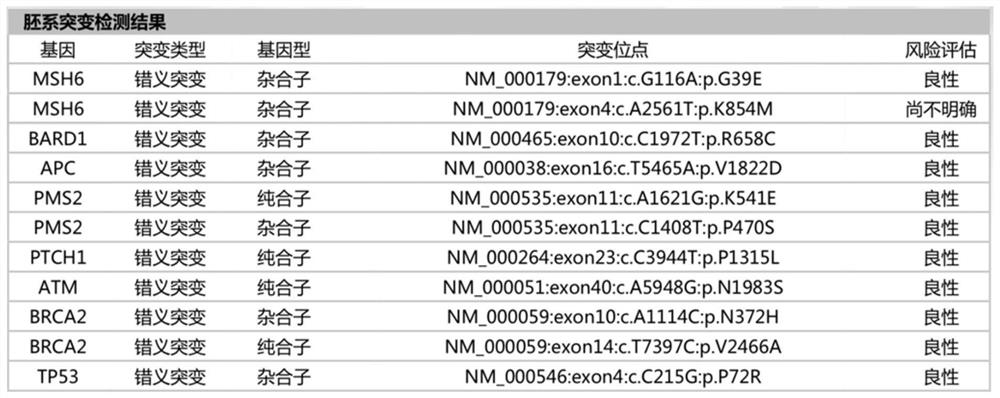Pan-cancer detection panel based on next-generation sequencing technology and application of detection panel
A second-generation sequencing technology and second-generation sequencing technology, applied in the field of pan-cancer detection panels
- Summary
- Abstract
- Description
- Claims
- Application Information
AI Technical Summary
Problems solved by technology
Method used
Image
Examples
Embodiment
[0035]Step 1. Take a patient's cancer tissue and blood samples to extract DNA. 1. Use the QIAsymphony automated platform to extract and purify DNA.
[0036] Step 2. Fragment screening
[0037] 2.1 Quantify the ctDNA concentration first. If the total amount of 20μL reaches 30ng or more, the normal process, if it does not reach 30ng, use more, concentrate (the maximum volume can be 30μL, and the water will decrease accordingly), etc., to reach between 20-30ng, and continue the experiment. If the concentration is too low, for example, the initial concentration is about 0.5, then at least 10ng of DNA must be added in the experiment after concentration.
[0038] 2.2 Take the AMPure XP magnetic beads out of the refrigerator and equilibrate to room temperature half an hour in advance; prepare fresh 80% EtOH in advance (take 40mL of absolute ethanol and add 10mL of nucleic acid-free water NFW).
[0039] 2.3 Shake the AMPure XP magnetic beads equilibrated to room temperature for no le...
PUM
 Login to View More
Login to View More Abstract
Description
Claims
Application Information
 Login to View More
Login to View More - R&D Engineer
- R&D Manager
- IP Professional
- Industry Leading Data Capabilities
- Powerful AI technology
- Patent DNA Extraction
Browse by: Latest US Patents, China's latest patents, Technical Efficacy Thesaurus, Application Domain, Technology Topic, Popular Technical Reports.
© 2024 PatSnap. All rights reserved.Legal|Privacy policy|Modern Slavery Act Transparency Statement|Sitemap|About US| Contact US: help@patsnap.com










